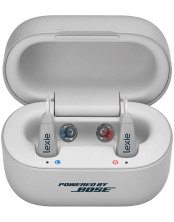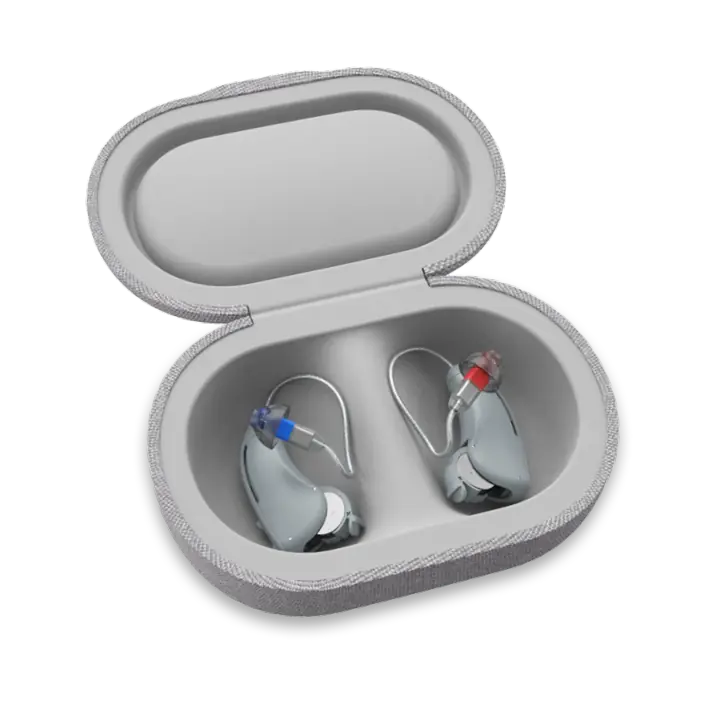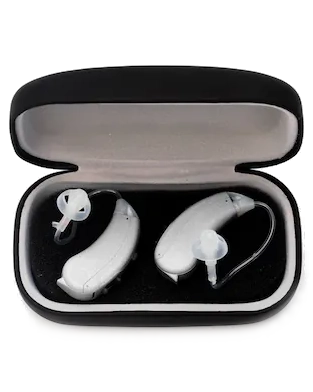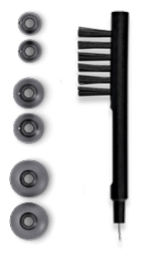Different Hearing Aid Types Explained
Published: March 19, 2021
Updated: March 23, 2022
Purchasing a hearing aid can be a daunting task as there are so many different hearing aid types. How should you choose your ideal hearing aid type?
Deciding on different technology levels of hearing aids depends a lot on the environments you often find yourself in. The more challenging your listening situations are, the more features you need in a hearing aid.
A challenging listening situation is defined as:
- Communicating in situations where a lot of background noise is present (such as a restaurant, nightclub, or shopping mall)
- Being in situations with poor acoustics (usually wide-open spaces that can cause an echo, such as a hall)
- Where more than one person is speaking at the same time (e.g conference, lunch hall, stadium).
If you have retired, live alone, or do not socialize often, a hearing aid with fewer features and capabilities may work well for you. However, these may not be your circumstances and you may find yourself in challenging listening situations on a daily basis. These situations may include going to church (poor acoustics), visiting with grandkids (more than one speaker), or going out to restaurants. Remember that a hearing aid that doesn’t offer a wide variety of features may still make it difficult to communicate, and a hearing aid with more features might suit your needs better and offer you a higher quality of life.
Hearing aid types
Depending on your hearing loss, you may be a candidate for many different hearing aid styles. Some hearing aids go behind your ear and some are practically invisible in the ear. Your hearing health professional will advise you on which hearing aid type will work best for your hearing loss.
Behind the ear hearing aids (BTE): These hearing aids go behind your ear and can either be fitted with a thin tube and a dome or a mold made from your ear, depending on how severe your hearing loss is. These hearing aids are usually easy to clean and a bit bigger than some other styles.
Receiver in the canal hearing aids (RIC): These hearing aids are smaller than BTE hearing aids, and usually with less battery consumption. They also go behind the ear and have a wire (receiver) going towards the ear canal.
Completely in the Canal (CIC)/ Invisible in the Canal (IIC): These are the smallest hearing aids on the market and can provide the user with an invisible solution for their hearing loss. The cons of this type of hearing aid are usually no connectivity and high battery consumption.
In the Ear (ITE)/ In the Canal (ITC): These hearing aids are a bit bigger than CIC hearing aids and use a bigger battery. But they also often have more connectivity options, depending on the brand of hearing aid.
Features
Once you have decided on a hearing aid type, you can decide on which features are important to you. Here is an overview of the different features you may find:
Connectivity: Some hearing aids can connect directly or via a Bluetooth device to your phone or other electronic devices.
Rechargeability: Some hearing aids work with batteries while others can charge like a phone. Rechargeable hearing aids are more expensive but much easier to handle, as you don’t need to change batteries. You also save money on batteries in the long run.
Automatic functioning: Top-end hearing aids usually have an automatic program built into your hearing aid. This means your hearing aid will assess your environment and adjust accordingly. For example, the hearing aid can decide if you are in quiet, noise, or music. Some hearing aids have many different environments they can distinguish between, taking away the need to adjust your hearing aid often.
Noise reduction: Almost all hearing aids have some features built in to reduce background noise. These features can be very sophisticated in some models, allowing you to hear speech from right around you, while still maintaining a natural listening environment. This means you will be able to enjoy music or the television without distortion, but still be able to maintain a conversation.
Bandwidth and channels: This is the way that the hearing aid processes sound. A hearing aid with bigger bandwidth and more channels will give you more natural sound quality.
Hearing aids are not a one size fits all solution- the type of hearing aid that works for a friend or family member may not be appropriate for your hearing loss or needs. Your hearing health professional will be able to recommend which of the different hearing aid types they feel is best suited to your unique needs.






